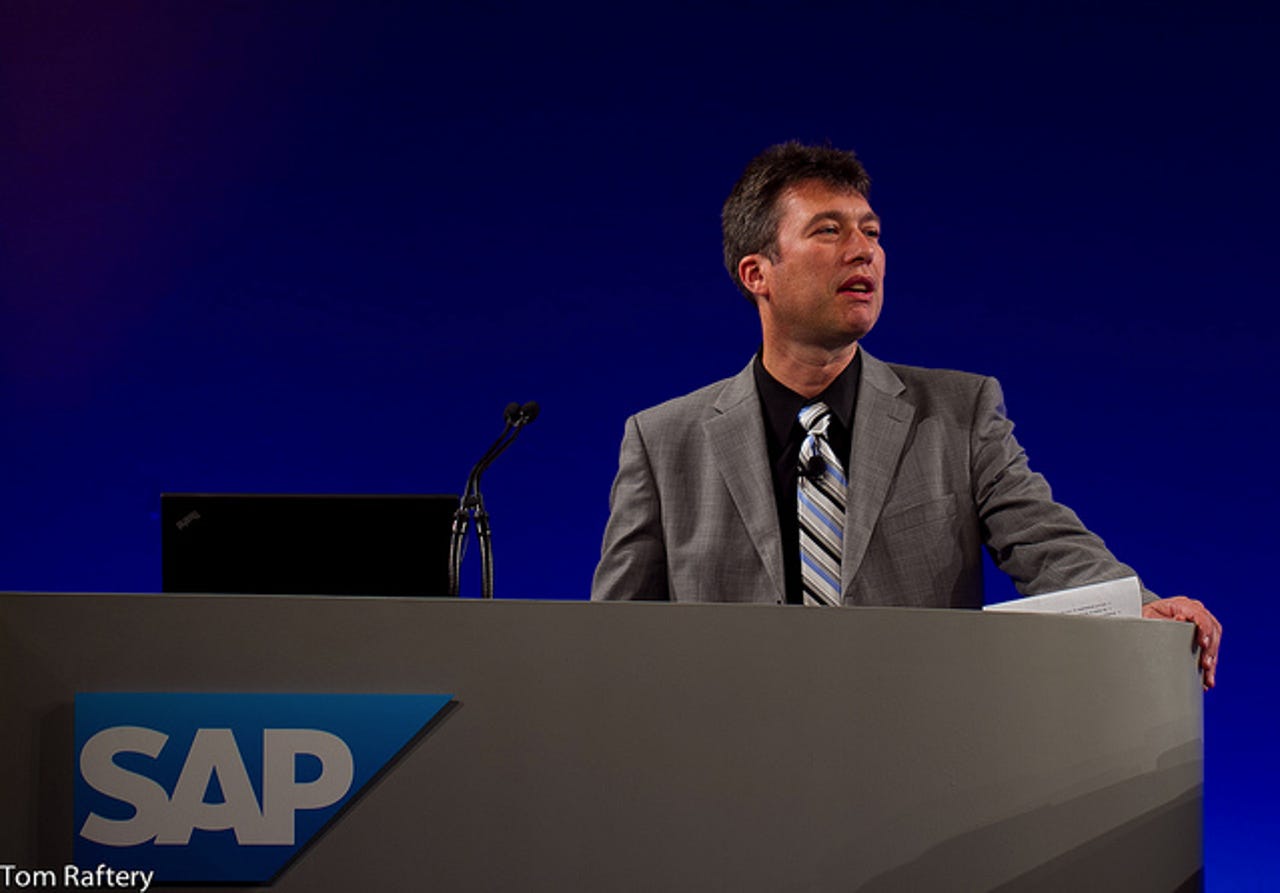Sustainability is dead. Long live sustainability


"So," says SAP chief sustainability officer Peter Graf, shifting in his seat across the table from me. "What's your angle, your spin on this?"
Graf and I have just finished a freewheeling, 30-minute chat about the company's sustainability developments, and though no journalist likes to hear that he's a spinmaster, you can't fault him for asking.
Graf is the first to admit that sustainability in the enterprise has changed. What was once a well-meaning corporate buzzword -- sustainability reports! stock photos of leaves! carbon credits! -- has died as economic concerns quickly leapfrogged overt corporate benevolence.
Save the environment? No -- save our jobs first.
Corporations around the world are emerging from an extended period of economic duress by aggressively taking strides to gain even the slightest edge over their competition. Tough times have left companies leaner than ever, and they're getting meaner every day by keeping a cold eye on their own operations: no excess energy consumption, no silly shipping routes, no bottom line bullshit. This is a business, and it should operate like one.
It's what Graf has been saying all along. He just calls it sustainability. Your chief executive calls it strategy. And now, he's wondering what I'm going to call it when I write about it on ZDNet.
That's the angle on my talks with him here at SAP's Sapphire Now conference in Orlando, Fla. It's a different frame, but the painting is the same.
"The conversation is much more sophisticated than it was four years ago," he said.
I told Graf I thought this year's conference was his group's most important to date, in many ways. For one, this year shows SAP's sustainability efforts becoming more deeply embedded in its line-of-business divisions, no longer walled off from the rest of the company. (Why? He says it's because customers are telling him that efficiencies are much easier for lines of business to justify as an operating expense, versus a capital expense by IT.) Sustainability is perhaps bigger than ever in the corporate world -- but it's no longer occurring under that hyped, misunderstood banner.
"Customers have a better understanding of what's material to them," he said. And they are using that understanding to drive future success. Sustainability and innovation, a sort-of yin and yang at SAP.
That's why the company made four announcements related to the concept here at Sapphire: first, a new version of the SuPM ("Sustainability Performance Management") platform that integrates the company's HANA in-memory computing software; second, a new version of a mobile app for incident management; third, an on-demand service for product safety that the company informally calls its "product stewardship network"; fourth, the next generation of energy management capabilities, also integrating HANA.
While HANA's technology itself is fascinating -- in short, it allows for dramatically faster data queries and analysis because it arranges data in a way that's more akin to how an application wants it -- its use cases are far more compelling.
For example, an electrical grid can become more predictable because you can run queries on a vast number of smart meters at once, with regularity, to forecast behavior, and thus profitability, and flatten the energy curve. Or, a supplier -- let's use a major fragrance firm as our example -- can determine which markets may like a new product in development based on historical responses to each of its many components. Or an airline can identify the latent risk of an accident before it happens by connecting the dots between the failure of an aircraft part and the potential risk to an entire fleet over time, turning condition-based maintenance on its head.
These don't sound like sustainability stories, but that's the point. The electricity grid improvement could reduce energy consumption. The fragrance manufacturing example could remove excess inventory from the distribution center. The airline example could avoid a costly accident.
More efficiency, better business, and an upside that pleases the entire C-suite.
None of this is new technology. But SAP is here at Sapphire trying to demonstrate to customers that it's never been done before like this -- not with this speed, and certainly not at this scale, serving a purpose that goes beyond software.
"It becomes more integrated into the way we do business," Graf said, "and that's great."
Photo: Graf at Sapphire 2010, courtesy of the talented Tom Raftery.
Related: